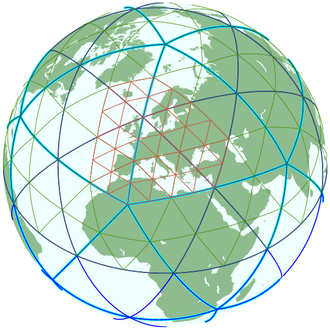Test suite to facilitate continuous integration, benchmarking, and delivery (CI/CB/CD) in ICON-ART development
| Tandem Project Leader | Martina Klose |
| NHR@KIT Project Leader | Jennifer Buchmüller |
| Project Coordinator | René Caspart |
| Team | SSPE |
| Researcher | Andreas Baer |
| Open Source Software | - |
Introduction
ICON-ART, the ICOsahedral Nonhydrostatic model with Aerosols and Reactive Trace gases, is a numerical weather prediction and climate modeling system developed jointly by several research institutions. It is used for both research and operational weather forecasting. The ART module provides (gas-phase) chemistry, aerosol dynamics and related feedback processes. This module was initiated by and undergoes continuous development at the Karlsruhe Institute of Technology (KIT).
Project description
The aim of the project TESSA (TESt Suite for ICON-ART) is to design and develop a test suite for ICON-ART that enables testing the model's source code at different levels, from single units of the code up to full end-to-end tests. For the ICON-ART community, the main benefit of this project is that it facilitates a more effective development process, eases the inclusion of new developments, and aids in workflow management. In addition, the project will help to guide towards ensuring reproducibility of results and allow to assess performance implications during model development.
For NHR@KIT, this project serves as an example for efficiently utilizing the broad palette of offered services. Thus, it can provide valuable insights regarding quality and applicability of these services to facilitate improvements and extensions. In addition, it can enhance the visibility of the newly established services in the realm of NHR@KIT to the earth system sciences (ESS).
The use cases within the ESS user group hereby poses a challenging requirement: an inherently large system – the whole earth – leads to comparably large amounts of data and a big demand of computational resources even for testing purposes. The infrastructure within NHR@KIT, provides the necessary ingredients to tackle this problem in the realm of the area “Sustainable Software Development – Cx as a Service”. As a starting point for the project, several automation tools used by the ICON and ESS community are assessed regarding their applicability for the project.


